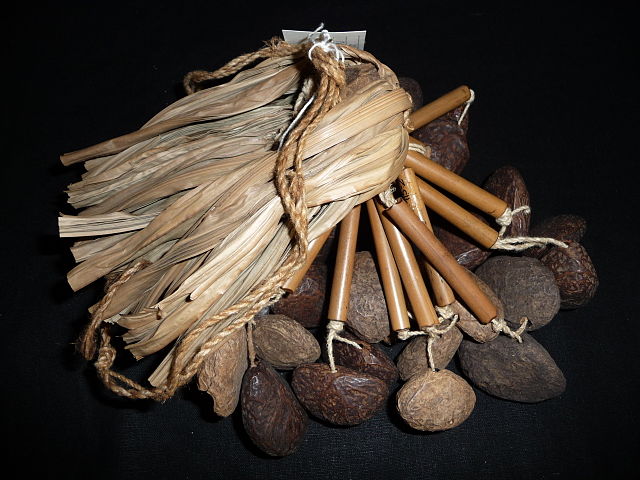 |
This is a file from the Wikimedia Commons. Information from its description page there is shown below.
Commons is a freely licensed media file repository. You can help.
|
Summary
| DescriptionPNG Rattle QM-r.jpg |
English: This rattle is made of leaves, seeds and coconut shell. It is tied around a dancer’s ankle and makes a sound when the dancer moves. Object description: This dance rattle is from East Sepik Province in Papua New Guinea. It is about 20 centimetres long and 18 centimetres wide. It was collected in 1982. It is made from 30 seed pods, tied together with a special string made from plant fibre. The cords on this rattle are held together with a piece of coconut shell. History: A rattle is a type of musical instrument known as an idiophone. This means it makes its sound by being shaken and jiggled. Sometimes, rattles like these form part of traditional dress, and are tied to the ankles of people who are dancing in traditional ‘singsings’. (A singsing is a special gathering where people perform traditional dances and songs.)
|
| Date |
22 September 2009 |
| Source |
Own work |
| Author |
Queensland Museum |
Licensing
|
I, the copyright holder of this work, hereby publish it under the following license:
|
File usage
The following pages on Schools Wikipedia link to this image (list may be incomplete):
This file contains additional information, probably added from the digital camera or scanner used to create or digitize it. If the file has been modified from its original state, some details may not fully reflect the modified file.
Schools Wikipedia has made the best of Wikipedia available to students. SOS Childrens Villages believes education is an important part of a child's life. That's why we ensure they receive nursery care as well as high-quality primary and secondary education. When they leave school, we support the children in our care as they progress to vocational training or higher education. Find out more about sponsoring a child.


